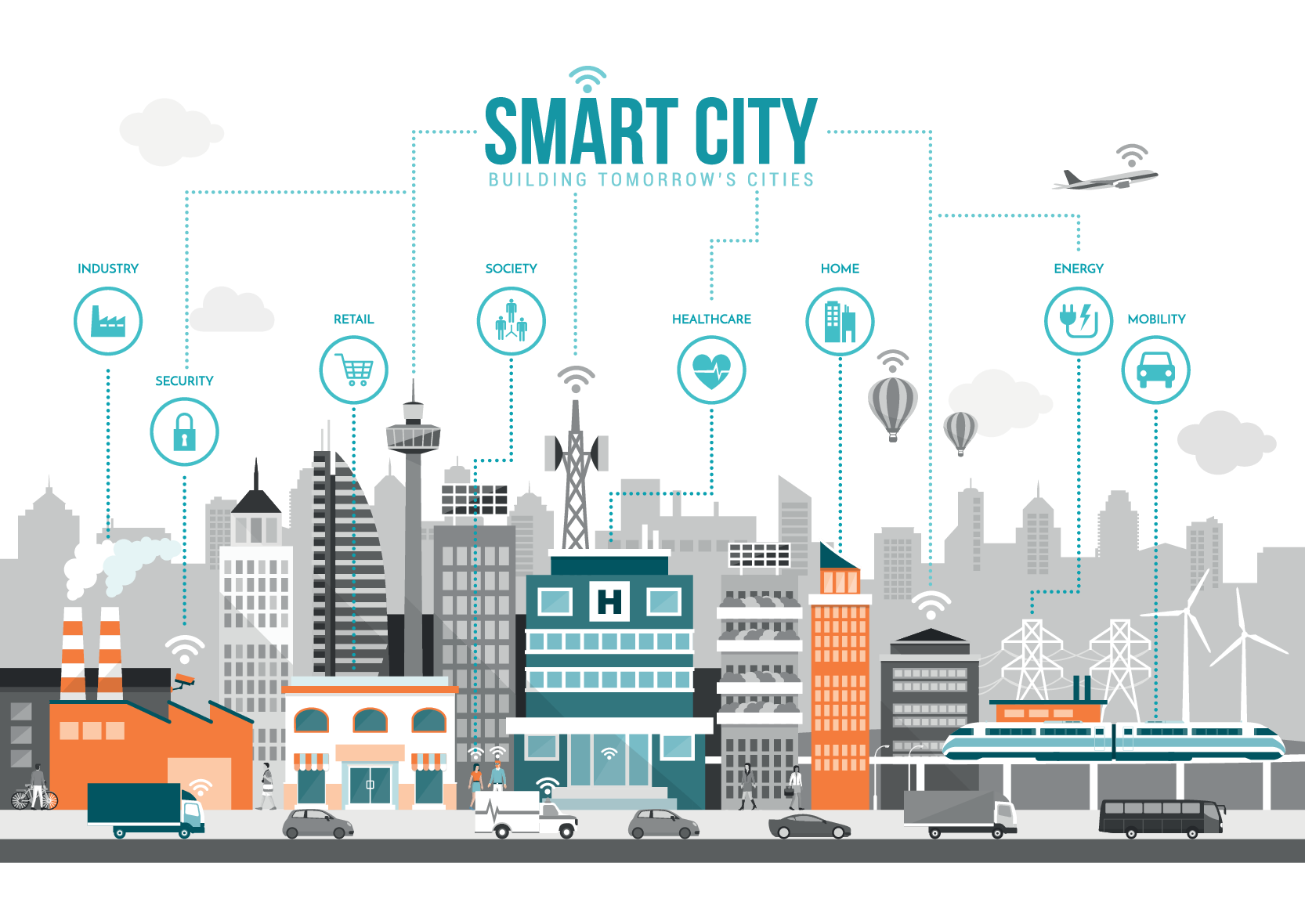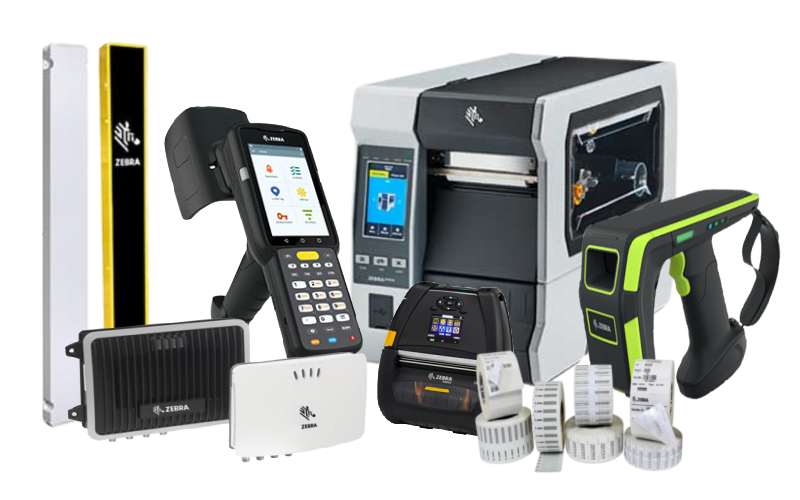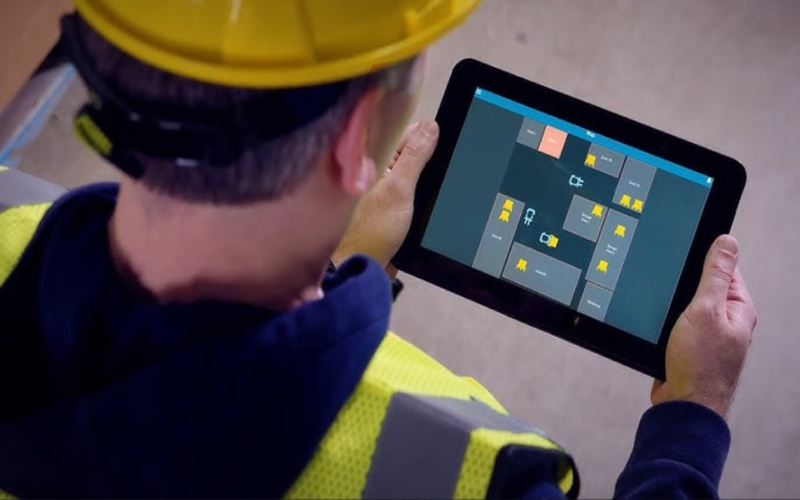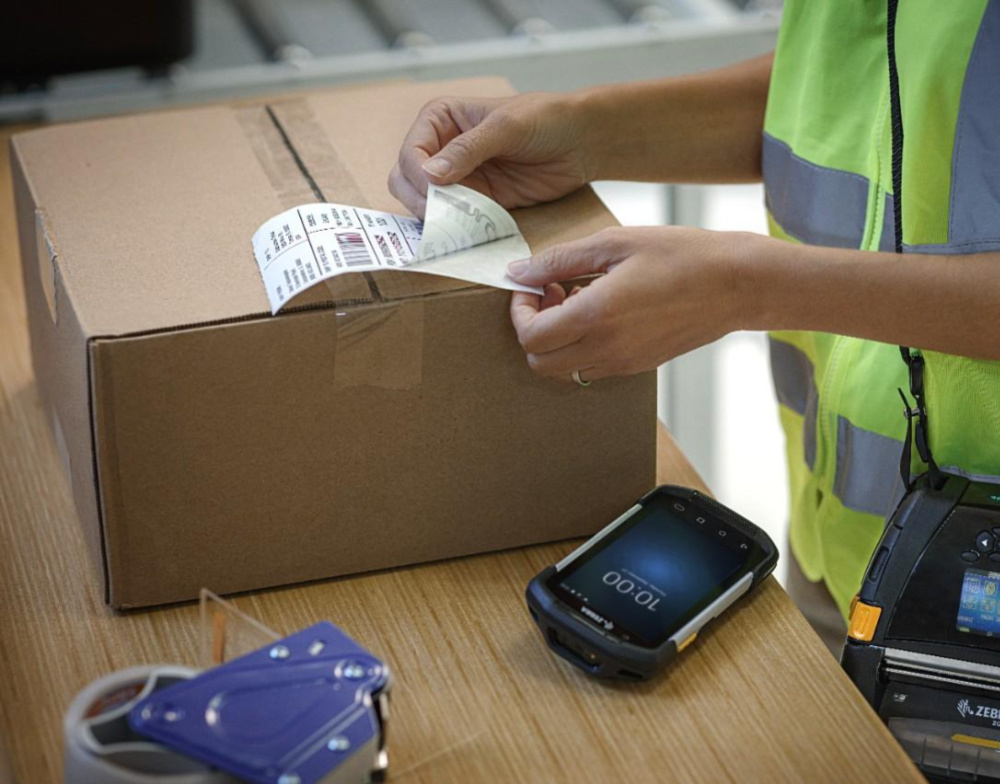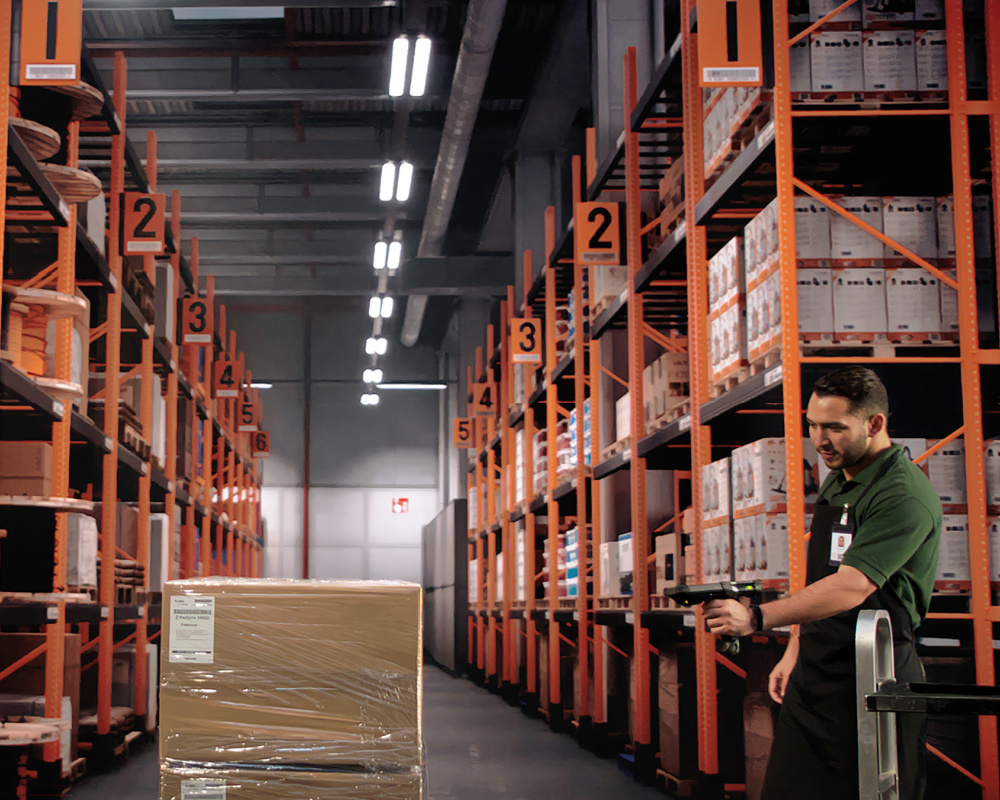
What is RFID? A Comprehensive Guide to Radio Frequency Identification
In today’s fast-paced and interconnected world, businesses are constantly seeking innovative solutions to improve operational efficiency, enhance supply chain visibility, and optimize asset management. One such technology that has gained widespread recognition and adoption is Radio Frequency Identification (RFID). RFID offers a powerful way to identify, track, and manage objects or assets in real-time, using radio waves to wirelessly transmit data.
As experts in this technology, we will delve into the world of RFID and explore its various facets, applications, and benefits. We’ll demystify the working principle behind RFID systems, shed light on the components and infrastructure involved, and discuss the different types of RFID tags and readers. Furthermore, we’ll examine the advantages of this technology across industries, ranging from retail and logistics to healthcare, manufacturing, and beyond.
But RFID goes beyond simple identification and tracking; it enables businesses to gain actionable insights, streamline processes, and make informed decisions based on real-time data. We’ll dive into the value it brings to businesses, such as inventory accuracy, supply chain optimization, improved asset visibility, enhanced customer experiences, and increased operational efficiency. Additionally, we’ll explore the potential challenges and considerations when implementing an RFID system, such as data security and privacy, integration with existing systems, and industry-specific requirements.
Moreover, this blog will provide a glimpse into the future of RFID, highlighting emerging trends, advancements, and applications. We’ll discuss how RFID is evolving in the era of the Internet of Things (IoT), enabling connectivity and interoperability between objects, and contributing to the concept of smart cities and digital transformation.
Whether you’re new to RFID or seeking to expand your knowledge, this will serve as a comprehensive guide to understanding the technology, its benefits, and its role in shaping the future of business operations. So, let’s embark on this journey together and discover the transformative potential that this technology holds.

1: Understanding RFID
Radio Frequency Identification is a technology that utilizes electromagnetic fields for the wireless transmission of data using radio waves. What makes this technology so impactful is its power to provide businesses with the ability to automatically and accurately identify and track assets or objects throughout their lifecycle. This eliminates the need for manual data entry and reduces human errors, leading to increased visibility, efficiency, and cost savings.
RFID provides a wireless means of collecting and storing data on tags attached to physical items. These tags contain a microchip and an antenna, allowing them to communicate with RFID readers through radio frequency signals. When a reader emits radio waves, the tags within its range detect the signals and respond by transmitting their stored information. This information can include unique identifiers, product details, manufacturing dates, or any other data relevant to the item being tracked.
RFID technology provides several advantages over traditional barcode systems. Firstly, RFID tags can be read without direct line-of-sight, meaning they can be read even when embedded within objects or placed in challenging environments. This makes RFID ideal for applications where manual scanning would be difficult or time-consuming. Additionally, it enables multiple tags to be read simultaneously, allowing for faster and more efficient data collection.
Another benefit of RFID is its ability to automate data capture processes. Items can be identified and tracked automatically, eliminating the need for manual data entry or barcode scanning. This saves time, reduces human error, and improves operational efficiency. RFID also enables real-time visibility and accurate inventory management, as items can be quickly located, counted, and monitored throughout the supply chain or within a facility.
The way it all work is through an RFID system, which consists of three primary components: RFID tags, readers, and a backend system. In conjunction, this system enables organizations to take control of their supply chain so that they may make smarter and more proactive decisions based on real-time insights.
In the next section, we will explore the various components of an RFID system in more detail and understand how they work together to enable seamless identification and tracking.
2: Components of an RFID System
An RFID system comprises several key components that work together to enable seamless identification and tracking of objects or assets. Let’s delve deeper into each component:
-
RFID Tags: RFID tags are small electronic devices that contain a microchip and an antenna. They come in different form factors, such as adhesive labels, cards, or even embedded in products. Each tag carries a unique identifier that can be read wirelessly by RFID readers. Tags can be either passive, relying on the energy from the reader to power them, or active, with an onboard power source. The choice of tag type depends on the specific application requirements.
-
RFID Readers: RFID readers, also known as interrogators, are devices that transmit and receive radio signals to communicate with tags. They emit radio waves at a specific frequency and capture the responses from the tags within their range. Readers can be handheld or fixed, depending on the application. They are equipped with antennas that send and receive signals to establish communication with the tags.
-
Middleware: The middleware is the software component that acts as a bridge between the RFID readers and the backend system. It manages the flow of data between the readers and the central database, ensuring smooth communication and data synchronization. The middleware may include features such as filtering and data validation to ensure accurate and reliable information exchange.
-
Backend System: The backend system consists of databases, servers, and software applications that process and manage the data. It receives the unique identifiers captured by the readers and associates them with relevant information stored in the database. The backend system can perform various functions, such as tracking the movement of assets, generating reports, triggering alerts, and integrating with other business systems for comprehensive visibility and control.
-
Integration Interfaces: RFID systems often require integration with existing enterprise systems, such as inventory management, supply chain, or warehouse management systems. Integration interfaces facilitate the seamless exchange of data between the RFID system and these external systems, enabling real-time updates and data synchronization.
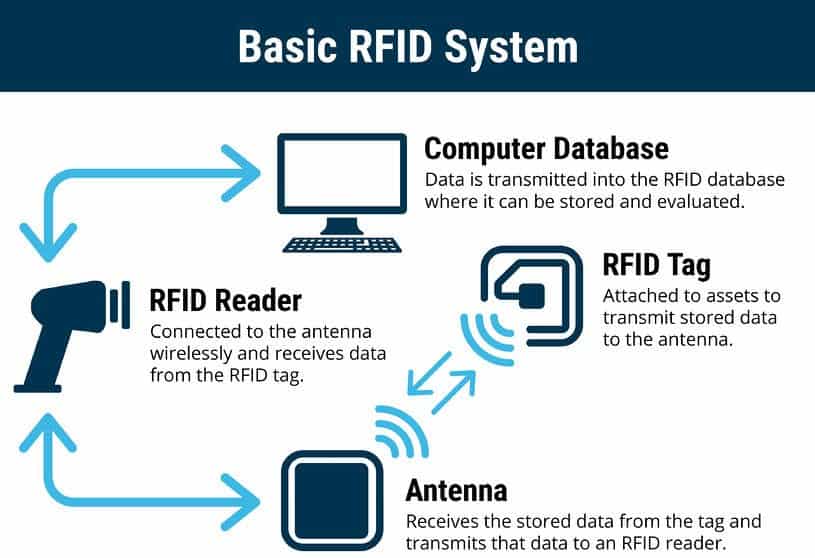
By combining these components, an RFID system enables businesses to achieve accurate and efficient identification, tracking, and management of assets or objects. The tags carry unique identifiers, which, when read by the readers, provide real-time visibility into the location and status of items. The data is then processed and leveraged by the backend system to optimize operations, improve inventory accuracy, enhance security, and streamline business processes.
In the next section, we will explore the various applications and benefits of RFID technology across different industries and sectors.
3: Applications and Benefits of RFID
RFID technology has found widespread adoption across various industries, revolutionizing operations and providing significant benefits. Let’s explore some of the key applications and advantages of RFID:
-
Supply Chain Management: RFID enables accurate and real-time tracking of goods throughout the supply chain, from manufacturing to distribution and retail. It allows for efficient inventory management, reducing stockouts, improving order fulfillment, and minimizing losses due to theft or misplaced items. RFID also enhances supply chain visibility, enabling businesses to monitor the movement of goods, optimize logistics, and streamline operations.
-
Asset Tracking: RFID is an invaluable tool for tracking and managing assets. It can be used to monitor the location, condition, and maintenance history of valuable equipment, tools, and vehicles. This ensures that assets are utilized efficiently, maintenance schedules are adhered to, and losses or theft are minimized. RFID-based asset tracking improves asset utilization, reduces downtime, and lowers replacement costs.
-
Retail and Inventory Management: RFID plays a vital role in retail operations by enabling accurate and efficient inventory management. With RFID tags attached to individual products or packaging, retailers can perform quick and automated inventory counts, reducing the need for manual scanning. This enables real-time stock visibility, prevents stockouts, optimizes replenishment, and improves overall customer satisfaction.
-
Healthcare and Pharmaceutical: In the healthcare industry, RFID helps streamline processes, enhance patient safety, and improve inventory control. Tags on medical equipment, supplies, and medications facilitate accurate asset tracking, reduce errors in patient identification, and enhance medication management. RFID also enables the tracking of temperature-sensitive medications and monitors their expiration dates, ensuring patient safety and regulatory compliance.
-
Manufacturing and Work-in-Process Tracking: RFID is widely used in manufacturing environments to track and manage work-in-process (WIP) items. It allows for real-time visibility into production stages, helps monitor production efficiency, and facilitates error-free traceability. RFID also assists in automating material handling, improving quality control, and reducing manual data entry.
-
Access Control and Security: RFID-based access control systems enhance security by providing efficient and reliable identification and authentication. RFID cards or badges can be used for personnel access to buildings, restricted areas, or specific equipment. They offer convenience, speed, and enhanced security compared to traditional key-based systems.

The benefits of this technology are far-reaching. It enhances operational efficiency, reduces costs, minimizes errors, improves visibility and traceability, and ultimately leads to enhanced customer satisfaction. By leveraging RFID solutions, businesses can optimize their processes, improve decision-making, and gain a competitive edge in today’s fast-paced and data-driven world.
In the next section, we will explore the process of implementing an RFID system, including site surveys, tag placement considerations, and reader infrastructure setup.
4: RFID Implementation and Considerations
Implementing an RFID system requires careful planning and consideration of several key factors. Let’s delve into the important aspects to keep in mind when deploying RFID technology:
-
System Design: Designing an effective RFID system involves determining the appropriate RFID tags, readers, and antennas based on the specific application requirements. Factors such as read range, tag durability, and environmental conditions must be considered to ensure optimal performance. It is crucial to select RFID components that are compatible and can seamlessly integrate into existing infrastructure.
-
Tag Selection: RFID tags come in various forms, including passive, active, and semi-passive, each with different capabilities and power requirements. Consider the specific requirements of your application to determine which type is most suitable. Passive tags are cost-effective and smaller, making them ideal for many applications, while active tags offer extended read ranges and greater functionality. Choosing the right type of tag also depends on factors such as the desired read range, tag lifespan, and whether the tags need to withstand harsh environmental conditions or interact with metal or liquid surfaces. It is important to select tags that provide the necessary functionality and are cost-effective for the intended use case.
-
Tag Placement: The placement of RFID tags on objects or individuals is essential for reliable and accurate reading. Consider the physical characteristics of the objects or the location of the individuals to determine the optimal placement of tags. Additionally, assess the environmental conditions, such as temperature, moisture, and potential interference, to choose tags that can withstand and perform reliably in those conditions.
-
RFID Frequencies: RFID technology operates on different frequencies, such as low frequency (LF), high frequency (HF), and ultra-high frequency (UHF). LF RFID is suitable for short-range applications, while HF and UHF RFID offer longer read ranges and faster data transfer speeds. Choose the frequency that aligns with your desired read range and data transfer requirements.
-
Data Integration and Compatability: Integrating RFID data into existing systems, such as enterprise resource planning (ERP) or inventory management systems, is essential for leveraging the full potential of this technology. This requires establishing proper data interfaces and protocols to ensure seamless communication between the RFID system and other software applications. Compatibility with your organization’s IT infrastructure is crucial for smooth operations and effective data sharing. Integration with other technologies, such as barcode scanners or IoT devices, may also be necessary to create a comprehensive solution that enhances operational efficiency and data accuracy via real-time data updates, accurate inventory management, and effective decision-making based on timely and reliable information.
-
Scalability and Flexibility: RFID systems should be designed with scalability in mind to accommodate future growth and evolving business needs. Considerations such as the ability to add more RFID readers, expand tag capacity, or integrate with other technologies are crucial for long-term success. Flexibility in the RFID system design ensures adaptability to changing requirements and the ability to incorporate additional functionality or features as the business expands.
-
Privacy and Security: As with any technology that involves data collection, privacy and security are paramount in RFID implementations. Protecting sensitive information, preventing unauthorized access to data, and complying with applicable privacy regulations are essential considerations. Encryption, access controls, and secure data management practices should be implemented to safeguard the integrity and confidentiality of data.
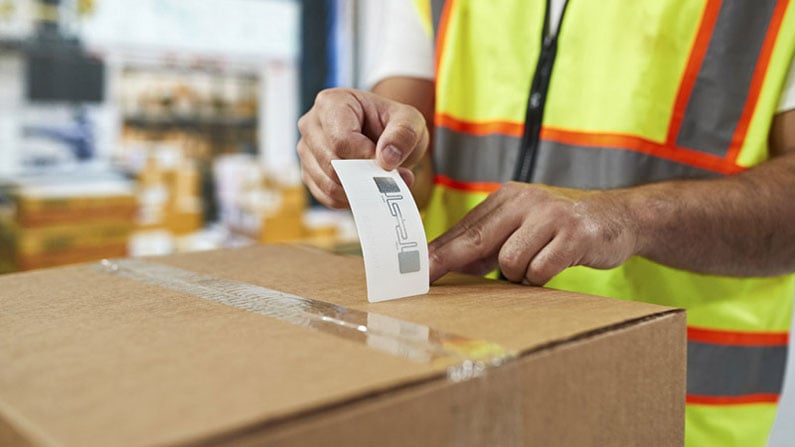
By considering these implementation factors, businesses can ensure a successful RFID deployment that aligns with their specific needs and goals. RFID technology has the potential to transform operations, streamline processes, and unlock new levels of efficiency and visibility across various industries.
In the final section of this blog, we will summarize the key points discussed and highlight the transformative impact of RFID on businesses and society.
5: Future Trends and Innovations
RFID technology is constantly evolving, and it is paving the way for exciting advancements and applications. As we enter the era of the Internet of Things (IoT), RFID is playing a crucial role in enabling connectivity and interoperability between objects, contributing to the concept of smart cities and digital transformation. Here are some emerging trends and developments to watch out for:
-
Integration with the Internet of Things (IoT): RFID is evolving in tandem with the IoT, enabling seamless communication and data exchange between objects and systems. By integrating RFID technology with IoT platforms, organizations can achieve real-time visibility, actionable insights, and enhanced control over their assets, inventory, and supply chains. This integration drives efficiency, automation, and improved decision-making.
-
Advancements in Sensor Technology: RFID tags are incorporating advanced sensing capabilities, expanding their applications beyond identification and tracking. These tags can now monitor and transmit data such as temperature, humidity, pressure, and more. Such advancements are particularly valuable in industries like healthcare, logistics, and agriculture, where real-time environmental monitoring is critical for ensuring product quality, safety, and compliance.
-
Contributing to Smart Cities: RFID technology plays a significant role in building smart cities by enabling efficient infrastructure management, intelligent transportation systems, and enhanced public services. RFID-based solutions facilitate automated toll collection, parking management, waste management, and access control. They also contribute to citizen safety and engagement through applications like smart cards, e-passports, and contactless payments.
-
Enhanced Data Analytics and Insights: With the increasing volume of RFID-generated data, advanced analytics tools are emerging to extract valuable insights. By leveraging big data analytics, machine learning, and artificial intelligence, organizations can uncover patterns, trends, and anomalies in their operations. These insights drive data-driven decision-making, process optimization, and proactive risk management.
-
Real-Time Location Systems (RTLS): Real-Time Location Systems use RFID technology to enable precise location-based services and asset tracking within a defined area. RTLS solutions provide businesses with accurate real-time information about the whereabouts of assets, inventory, and personnel. This unlocks new possibilities for improving operational efficiency, enhancing safety protocols, optimizing workflows, and delivering superior customer experiences.
-
Continued Miniaturization and Integration: RFID technology is becoming smaller, more compact, and easier to integrate into various objects and devices. This miniaturization opens up opportunities for embedding RFID into everyday items, wearables, and even fabrics. Such integration facilitates seamless tracking, monitoring, and interaction in diverse domains like retail, healthcare, and logistics.
